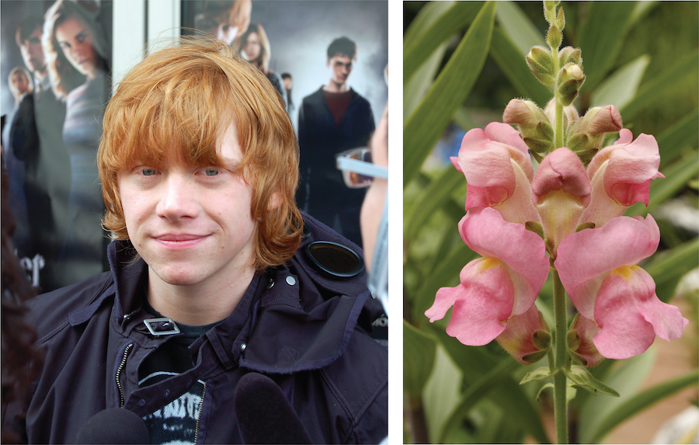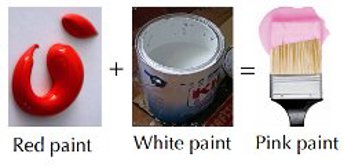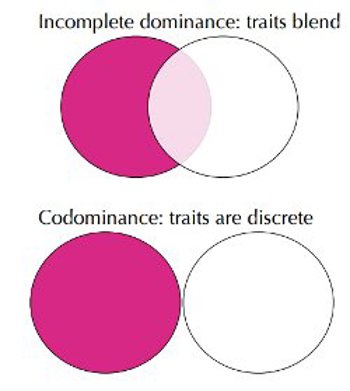
Why is it that some traits show as codominant, but others show as incomplete dominant?
May 27, 2015

- Related Topics:
- Dominant and recessive,
- DNA basics,
- Classical genetics
A middle school student from Illinois asks:
"Why is it that some traits show as codominant, but others show as incomplete dominant?"
Great question! The answer has to do with how different genes work to give traits. And how differences in genes affect those traits.
Before we go into the why, let’s back up and go over different kinds of traits. Then, we’ll review how genes cause traits. And then finally, we’ll tackle the why of your question!
There Are Different Kinds of Traits
Kids inherit traits from their parents. Sometimes when two parents with different traits have kids, all the kids end up with only one parent’s trait even though the children inherited both. In this case, one trait is said to be dominant over the other recessive one.
Red hair is a great example of this. When one parent has red hair and the other doesn’t, sometimes none of their kids end up with red hair!
Other times two traits will blend. This situation is called incomplete dominance. A great example of this is when a plant with red flowers is paired with a plant with white flowers and the seeds give plants with pink flowers.
Finally, there are examples when the child ends up with both parents’ traits. This is called codominance.
One good example of this is blood type. A parent with A blood type and a parent with B blood type can have a child with AB blood type. Here, the child has both traits from their parents at the same time.

Genes Cause Traits
A gene is like a set of instructions for making a certain trait. For example, people have a gene that determines their blood type, and another gene that determines if they have red hair or not. A plant might have a gene that decides what color its flowers will be. And so on for most traits for every living thing.
People (and many plants) have two copies of most genes. One copy comes from mom and the other from dad.
It is important to remember that we all have the same genes (the genes that make us people, and not cows!). But those genes come in different versions, which scientists call alleles. It is these different alleles that give us different traits.
Let’s take our red hair trait as an example. There isn’t a gene for red hair and a gene for not having red hair. Instead, a single gene comes in different alleles — one for red hair and one for not red hair. A trait is actually the result of the mix of alleles that you have at a certain gene.
Dominant and Recessive Traits
Let’s start with what most of us learned about traits in school — dominant and recessive. We will focus on the trait for red hair as an example. In this example, we will represent the not-red hair version with an R and the red hair version with an r.
Now imagine we have a parent with red hair and one without. In this case we know the parent with red hair probably has two r versions. This parent is rr. And to make things simpler, we will say that the parent without red hair has two R’s, and so is RR.
In this case, each child will get an R from one parent and an r from the other. Each will be Rr. And it turns out, none of the kids will probably have red hair. (Click here for why I had to say probably.) Red hair is recessive to not having red hair.
The R allele being dominant over r makes perfect sense when you look at the genes. The job of R is to turn red pigment into brown. The r version can’t do this.
So if you have an R and an r, you still have one copy of the gene that can get rid of red pigment. That one copy of R is enough. This is why R is usually dominant over r and why most people with Rr do not have red hair.
Incomplete Dominant Traits
Now we can move on to incomplete dominant traits. We will focus on the trait for flower color as an example. In this example, imagine that the trait for flower color comes in two alleles, R for red flowers and r for white flowers.
Now let’s say that one parent plant has white flowers and another parent plant has red flowers. This means that the parent plant with white flowers is rr. And for reasons we’ll discuss below, the parent plant with red flowers is RR. When these parents are paired, the Rr seeds make plants with pink flowers!
This is an example of incomplete dominance, when the inherited alleles of a trait blend. This happens when the dominant trait is not totally dominant, and the recessive trait is not totally recessive. It’s like mixing paint: red paint + white paint = pink paint.

Of course the plant doesn’t make paint! But it does make pigments.
In this case, we can imagine that the R allele makes red pigment and the r allele makes white. In an Rr you get a mix of red and white which makes pink!
The difference with our red hair example is that in this case, both alleles are doing something. Both make something that mix or blend to give a new trait.
Having said this, there is a potential wrinkle. Imagine that the white allele is indeed broken and makes no pigment. In this case, two working copies (RR) make twice as much pigment as one working copy (Rr).
Now you’d get a dark red flower and a light red flower. If it’s light enough, it just might be pink…
So there are different ways for traits to be dominant, recessive, or incompletely dominant. It all depends on what the genes do and what the difference in the allele does to the gene.

Codominant Traits
Now let’s tackle codominant traits. For this situation we will use the example of blood type.
There are three alleles for blood type: A, B and O. For codominant traits, we will focus on blood types A and B. (If you want to learn about how type O fits into the mix, click here.)
Imagine we have one parent with type A blood and the other with type B blood. To keep things simple, we will say that the parent with type A blood is AA and the other parent with type B blood is BB.
The kids inherit A from one parent and B from the other and are AB. The tricky thing here is that the kids with AB blood type have type A and type B blood rather than just a blend of part A and part B.

It works this way because each allele makes something different that doesn’t mix. So that the A allele makes A and the B allele makes B. Unlike pigments, these two things are discrete and don’t mix together.
Think about A and B like marbles. Red and white marbles do not make pink marbles. You still have a mix of the two different kinds of marbles. Same thing with A and B blood types!
Conclusion
As you can see, depending on what the gene does, a trait can be dominant and recessive, incomplete dominant, or codominant. These situations are determined by how the different alleles for that trait interact.

Author: Amanda Jacobson
When this answer was published in 2015, Amanda was a Ph.D. candidate in the Department of Microbiology & Immunology, studying bacterial infections and host immune responses in Denie Monack’s laboratory. Amanda wrote this answer while participating in the Stanford at The Tech program.
 Skip Navigation
Skip Navigation
